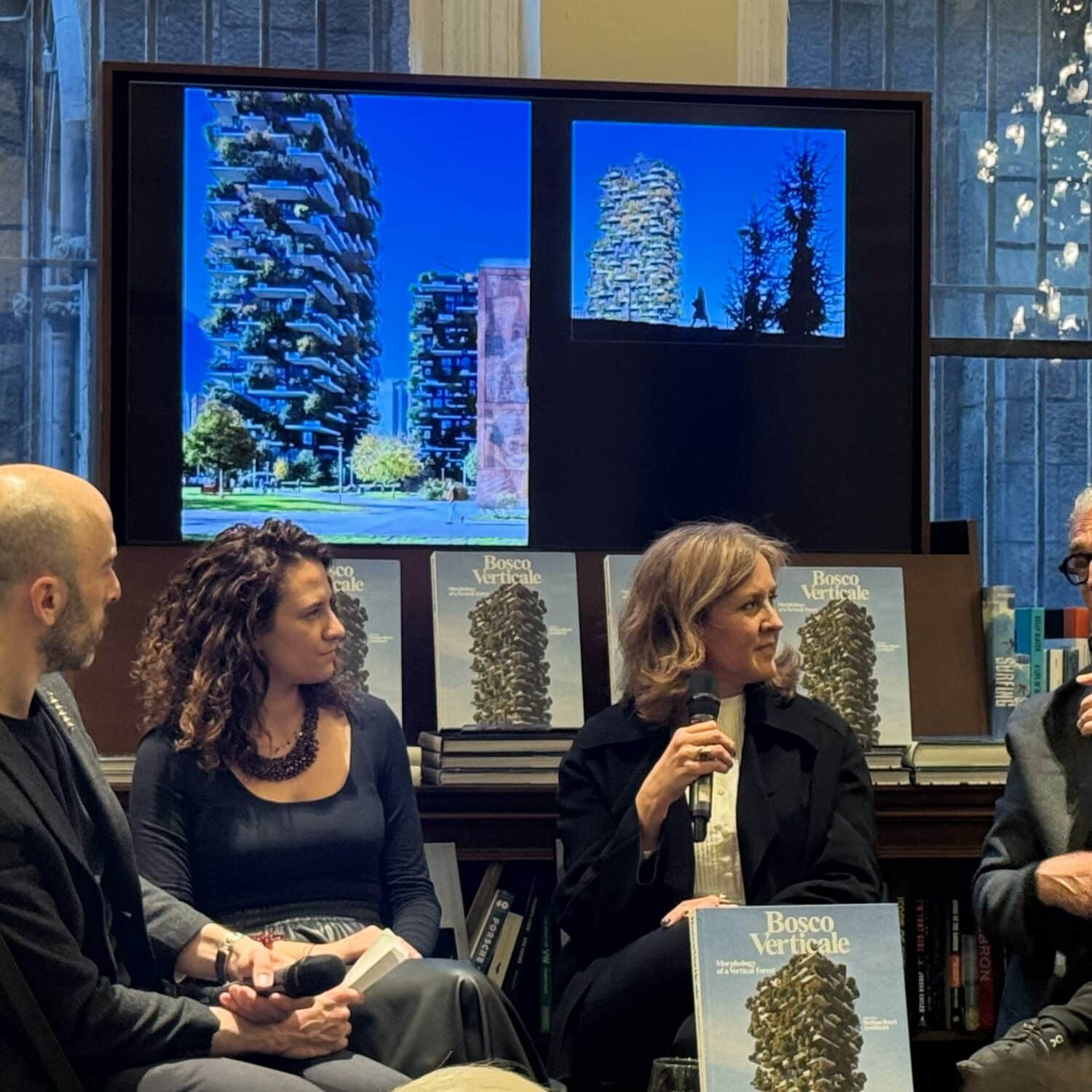Stefano Boeri has a quiet way of talking about his architecture, but it doesn’t take much rhetoric to understand how much Bosco Verticale, ten years after its inauguration in Milan, has changed the way we look at cities. During the event organized in the setting of a crowded Rizzoli Bookstore, in the presence of Consul General Fabrizio Di Michele, Boeri presented Bosco Verticale – Morphology of a Vertical Forest, the volume published by Rizzoli that celebrates the project’s first decade. Bosco Verticale, inaugurated in 2014 in Milan, has over the years become an international symbol of green architecture, but also an object of popular affection, as he recounted during this interview. “There are children writing letters, drawing models in schools. It’s like a living architecture.” A building that stimulates “that little dimension of madness and mystery that can stir the imagination.” In fact, he will soon serve as a juror in a competition for elementary school painters dedicated precisely to its creation.
It is no coincidence that the book presentation in New York drew such a large audience, made up not only of insiders, but also of onlookers, students and citizens. The hall was full. “One feels at home here,” Boeri says with a smile. “New York is a city that changes, has different moments in its history, but always remains true to itself.” He has been coming there often, he says, since he was 12 years old, but this time he sensed something more. “I would like to be able to say that we are working on a Vertical Forest here as well. That’s not the case yet, but it would be wonderful.” In the meantime, he is content to observe a city that, even without a Vertical Forest, has become one of the world’s most vibrant laboratories on the topic of smart cities.
La sala di Rizzoli Bookstore piena per l’incontro con Stefano Boeri
And this is precisely the point from which he starts his reflection. For Boeri, the concept of a smart city does not coincide with the simple application of advanced technologies or green solutions. It needs broader thinking that holds together environment, society and justice. “If you take away the private car from people who live in neighborhoods without public transportation, you reduce pollution, but you create huge inequality.” The real challenge, he insists, is to leave no one behind. “Cities must address the green transition without penalizing those who are already suffering. Otherwise we risk bringing advantages to those who already have a lot, and disadvantages to those who have little.” A theme, that of inequality, which is also central to many of his firm’s ongoing projects, in Milan as in the rest of the world.
After all, it is cities that bear the greatest responsibility for climate change. “Seventy-five percent of the CO2 that fuels global warming is produced by urban centers,” Boeri explains. And it is always cities that suffer the most severe consequences, from extreme weather events to rising water levels. “But that is precisely why they have to become protagonists of change. They have the capabilities, the resources and the concentration of ideas to lead this transformation.” And if Milan with the Bosco Verticale has led the way, many other metropolises are trying to figure out how to replicate its effectiveness, adapting it to their own needs.
Boeri, however, does not limit himself to reasoning about sustainability in the abstract. During the interview, he also dwells on personal places and memories that tell of his connection to the city. “Washington Square is a place I always go back to, my brother was studying at NYU and we lived there for a while.” He then mentions the Guggenheim, which he considers “magical, unique, difficult.” Finally, he turns to a lesser-known but cherished topic: social housing in New York City. “There are neighborhoods built in the 1950s and 1960s that still endure today. They are extraordinary. When I was editing Urbanism magazine, we studied these realities a lot. And to find them still alive, despite everything, is impressive.”
Studio Stefano Boeri Architetti is currently involved in many projects, some of which take up the Vertical Forest model, but not only. Perhaps the most fascinating project is in Nepal, near Lumbini, the birthplace of Buddha. “We are building a large center for the Nepalese Buddhist community, where they have discovered there is one of Buddha’s relics.” An experience Boeri describes as touching: “We met with twenty-five Buddhist schools, there were five thousand people. It is a project that involved us deeply, both on a human and professional level.”
And as architecture continues to grapple with the challenges of the future, Boeri seems convinced that the path set by the Bosco Verticale is only the beginning. “Nature must return to inhabit spaces designed for humans,” he says. This is not a matter of aesthetics or fashion, but a concrete necessity, concerning the environment, health, quality of life. And also, perhaps, that ability to wonder that school children, with their drawings, keep reminding him of every day.
The article Stefano Boeri talks about his “Vertical Forest” at Rizzoli’s in New York comes from TheNewyorkese.

